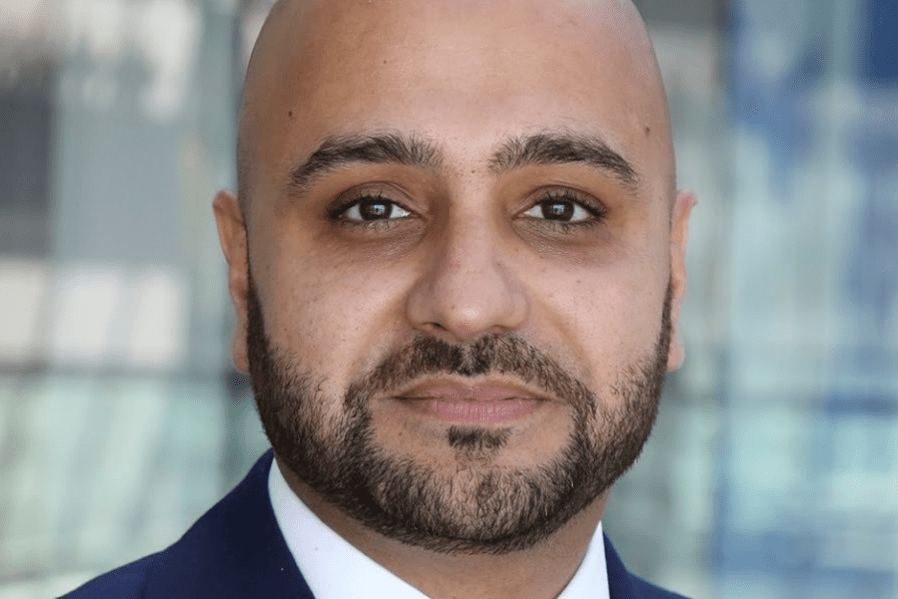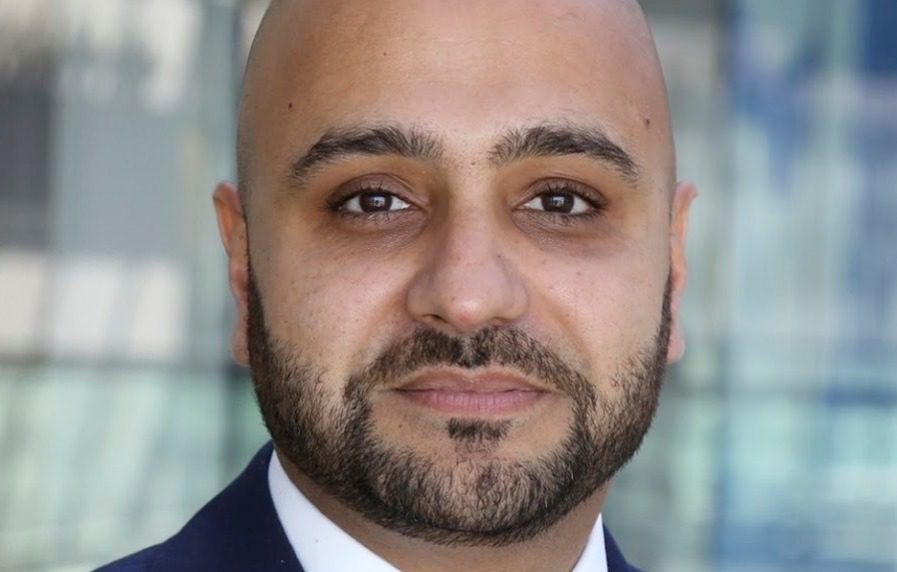 Asif Sadiq is Senior Vice President for Equity and Inclusion at WarnerMedia International, where he ensures diversity and inclusion is embedded in all elements of a business, resulting in innovative, creative and inclusive products and services for WarnerMedia’s more than 30,000 employees worldwide. Sadiq sat down with Joe Kornik, VISION by Protiviti’s Editor-in-Chief, to discuss the role of diversity and inclusion in the future of work.
Asif Sadiq is Senior Vice President for Equity and Inclusion at WarnerMedia International, where he ensures diversity and inclusion is embedded in all elements of a business, resulting in innovative, creative and inclusive products and services for WarnerMedia’s more than 30,000 employees worldwide. Sadiq sat down with Joe Kornik, VISION by Protiviti’s Editor-in-Chief, to discuss the role of diversity and inclusion in the future of work.
Kornik: You’ve spent your entire career focused on diversity and inclusion in the workplace. Before we talk about its future, I’m wondering where you see these matters currently?
Sadiq: When we look at diversity, I think it’s important to remember no person is defined by one singular dimension of diversity. Every one of us has multiple layers that make up our unique identities—someone’s female, bisexual, black or disabled. All these different elements create a unique identity. And therefore, the most important thing for me when I think about diversity is to start exploring it beyond a singular dimension because if we stick to a singular dimension within a workplace, we’re not seeing the whole picture of diversity. At most companies, diversity is based on the visible characteristics people see. The problem with that is you’re not truly understanding what matters to that person, and what will make them feel truly included in the workplace. So that’s the first thing: We must look at diversity beyond one, single dimension.
The second aspect is to not overlook other factors like age diversity and neurodiversity. These other elements of diversity create great richness in the workplace. So, we must acknowledge that and understand that diversity is more encompassing than most of us realize. There’s sometimes a misconception that diversity is about a particular group. It isn’t now, never has been and, hopefully, it never will be. Every single person should feel that they bring something different and unique to the working environment. However, we also need to create inclusive environments where people can be their authentic self, free to speak up and give a differing opinion. We know that genuinely diverse and inclusive environments create better output, more innovation, higher productivity and enhanced problem solving. Research and data have proven this time and time again.
Kornik: It looks like we’re starting to see, perhaps, the beginning of the end of the pandemic. When it comes to diversity and inclusion, what would you say are the lessons learned and how do those lessons impact the future?
Sadiq: That’s a great question. The pandemic has disrupted a lot and created many challenges, but I do think there are some great lessons learned that can be applied in the future. One of the things we must acknowledge about the pandemic is that companies that were better prepared for it fared better. What do I mean? Those companies that had already explored flexible working options were in a better position, and companies that had never considered diverse working styles struggled. That shows that being aware of different learning styles and working styles proved to be an added benefit and good business—something the D&I crowd has known all along. The second takeaway from the pandemic is that it gave us unprecedented insights into each other’s lives. Most of us, for years, walked through the doors of where we worked as our workself and left our other life at home. Now, everyone knows more about each other. When a coworker sees my kids occasionally running in the background during a meeting, they have a better sense of who I am, and ultimately, that helps create better connections for us. Ironically, we’ve probably connected more on the human level in the virtual world the last two years than we did before the pandemic. I think that’s done wonders for us all.
Kornik: You touched on it so let’s talk a bit about those emerging working models. How do you think they will impact diversity and inclusion initiatives over the next decade?
Sadiq: Think back to pre-pandemic times: Do you remember how difficult it was for those people who were working remotely or were off site to fully participate in critical discussions taking place in a boardroom? We simply cannot go back to the behaviors of the past. Going forward, we all need to be more aware of the value of those in the room as well as the value of those not in the room. This is critical because we’ll be working more this way in the future. We need to ensure that whether you’re in the office or at home, you still feel included and you still feel part of the team. It’s so crucial that we have the systems in place that support all employees in this new working environment we’re going to be creating over the next several years.
Kornik: Let’s go out those several years, if we could, and look at 2030 and beyond. In what ways do you think diversity, equity and inclusion will be more strategically important than it is today? How do we move beyond traditional diversity initiatives to what’s next?
Sadiq: I’ve been working in the diversity, equity and inclusion space for 20 years, and one of the biggest shifts I’ve ever seen has occurred in the last two years during the pandemic. People just seem more aware and more engaged; it’s really shifted the whole conversation. It has started making organizations see that diversity and inclusion is not just an HR issue. Of course, it has lots of elements that touch HR, but companies have started to understand diversity and inclusion should be addressed through all aspects of the company. It needs to touch every single department, from employees to customer engagement, product design and innovation. There are dramatically shifting patterns of behavior around consumers and organizations are realizing they need to be fully “brain diverse.” We can all name big companies from 10 years ago that are not around today. Many would argue it’s a result of digitalization, e-commerce and technology. I would argue that they didn’t evolve with the times. They didn’t evolve with the changing behaviors of consumers, of their customers, of the younger generations. It’s something companies need to naturally build into their systems and processes across the business; it’s not something to spend five minutes talking about at the beginning of the meeting and another five minutes at the end. Diversity needs to be integrated seamlessly into all aspects of the business—finance, marketing, IT, operations. And for any company, this next decade will be critical in how it establishes itself for the future because consumers will no longer purchase goods and services from a company that doesn’t align to their core values.
Kornik: Do you think business leaders get that? Do they fully understand the business case for diversity?
Sadiq: I’d be naive to believe they all see it that way. For sure, there are some companies that see the value and understand it, and there are some that don’t. CEOs need to make sure it’s part of their agenda, their strategy and long-range plans. I think there are two big elements of this: One is culture. Culture is critical to any company’s future. Do we have a culture of inclusion? Do we have a culture that’s welcoming? Do we have a culture that values differences? Do we have a culture where you can speak up? Of course, any CEO can stand up and say we have a culture of inclusion, but how executives weave that culture into every part of the business is critical. CEOs need to treat it like any other business objective: Put money behind it, put the business plans in place, identify the people who need to drive the change, and create the systems to achieve the goal like any other business objective.
Kornik: So, let’s go to 2035. Any bold predictions about where you envision we’ll be in terms of diversity, equity and inclusion?
Sadiq: I do believe technology will be a big factor in the future. By 2035, I predict that we’ll have environments that are truly inclusive, and technology will help create that inclusion by removing human error and bias from interviews, recruitment, assessments, performance, promotions … and that’s all possible, probably even sooner. However, there’s a huge warning: The technology is only as good as the people who design it. If you haven’t built diversity into your company, or into that design or into the team working on it, you will end up with products and solutions that are biased. Simple as that. And one more thing that’s more of a hope than a prediction: By 2035, we should have a workplace where we’re not even talking about diversity anymore. With the right steps and leadership, you won’t even need people like me anymore. My role would merge into the role of every single leader in the organization. That’s where I’d like to see us end up.
